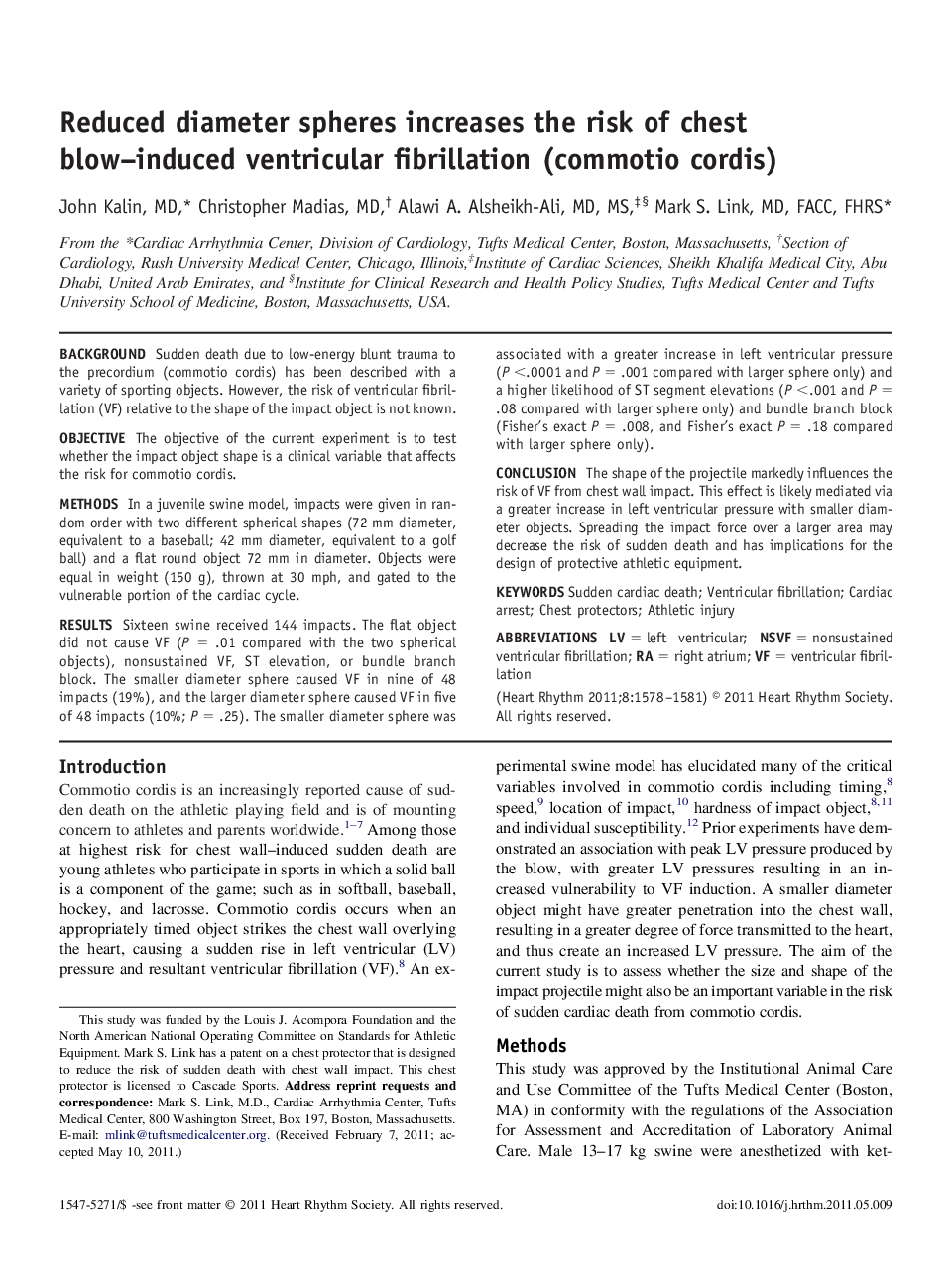| Article ID | Journal | Published Year | Pages | File Type |
|---|---|---|---|---|
| 2923682 | Heart Rhythm | 2011 | 4 Pages |
BackgroundSudden death due to low-energy blunt trauma to the precordium (commotio cordis) has been described with a variety of sporting objects. However, the risk of ventricular fibrillation (VF) relative to the shape of the impact object is not known.ObjectiveThe objective of the current experiment is to test whether the impact object shape is a clinical variable that affects the risk for commotio cordis.MethodsIn a juvenile swine model, impacts were given in random order with two different spherical shapes (72 mm diameter, equivalent to a baseball; 42 mm diameter, equivalent to a golf ball) and a flat round object 72 mm in diameter. Objects were equal in weight (150 g), thrown at 30 mph, and gated to the vulnerable portion of the cardiac cycle.ResultsSixteen swine received 144 impacts. The flat object did not cause VF (P = .01 compared with the two spherical objects), nonsustained VF, ST elevation, or bundle branch block. The smaller diameter sphere caused VF in nine of 48 impacts (19%), and the larger diameter sphere caused VF in five of 48 impacts (10%; P = .25). The smaller diameter sphere was associated with a greater increase in left ventricular pressure (P <.0001 and P = .001 compared with larger sphere only) and a higher likelihood of ST segment elevations (P <.001 and P = .08 compared with larger sphere only) and bundle branch block (Fisher's exact P = .008, and Fisher's exact P = .18 compared with larger sphere only).ConclusionThe shape of the projectile markedly influences the risk of VF from chest wall impact. This effect is likely mediated via a greater increase in left ventricular pressure with smaller diameter objects. Spreading the impact force over a larger area may decrease the risk of sudden death and has implications for the design of protective athletic equipment.
